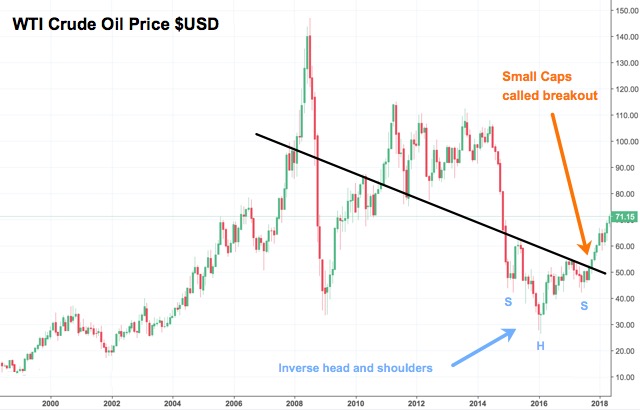Oil price up and over US$70 a barrel

Bank of America projects that oil could hit US$100 a barrel next year.
It has been promised for many years now but all of those predictions of the oil price rising again after years of very low prices are finally coming true.
There have even been projections from Bank of America that oil could hit US$100 a barrel again next year – a level that has not been seen since 2014 – as a whole raft of factors including the collapse of the Iran nuclear deal, rockets flying between Israel and Iran backed forces in Syria and a broad pick up in the world economy threaten to simultaneously restrict supply and boost demand.
Already since President Trump decided to back out of the Iran nuclear deal the price of Brent crude has spiked above US$77 a barrel – a rise of eight per cent over the past month and 15 per cent since the start of this year.

Trump has promised a range of “powerful” sanctions against Iran and that is big news for oil, given Iran has the fourth largest oil reserves in the world and has ramped up production by about a million barrels a day to 3.8 million barrels since signing on to the nuclear deal.
There are other factors at work here as well with the current agreement between OPEC and other major producers including Russia to slash output already helping to move the oil market from a supply glut to more balance.
That deal is due to expire at the end of 2018, but the Bank of America analysts said that OPEC and Russia are likely to continue working together to prevent prices from falling.
At the same time, the analysts said the global economy is growing at a healthy pace and supporting higher demand for oil.
All of which should be broadly positive for ASX listed oil and gas stocks.
Sustained higher oil prices would also serve to ramp up supplies of onshore oil by swing suppliers such as the price sensitive US shale oil producers.
